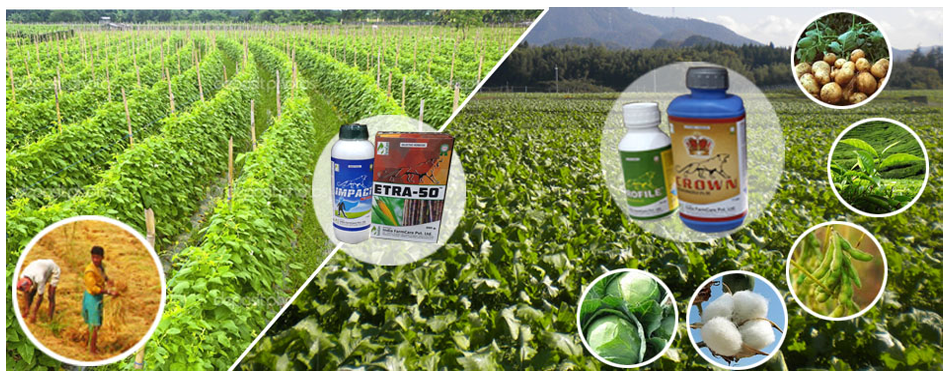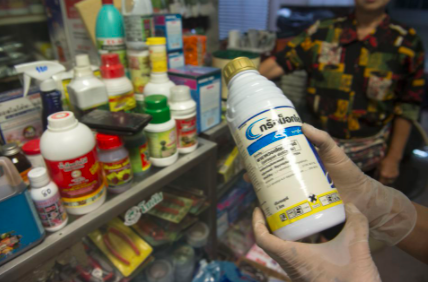
Ordering Agricultural Inputs And Requirements
Most agricultural inputs can be viewed as consumables. Consumables are the inputs required during the season to ensure crop growth. Consumables include pesticides, fertilisers and seed. It also includes packaging materials where crops are processed or packed on the farm. Remember, components such as packing material will not be stored together with pesticides.

The resources that are used in farm production include chemicals; equipment (tools and implements), feed and seed are collectively called agricultural inputs. Most farm inputs are purchased from co-operative or specialised dealers. The volumes of inputs purchased are normally high and it has to be stored on the farm before being used. Equipment is normally expensive and requires storage when not in use to ensure they last for prolonged periods of time.
It is important that when inputs are received, they are correctly identified on the order and the invoice. The store man must be able to identify what is being received, so that the products are sorted in the correct storage areas. In some cases, the various inputs may be stored in separate stores, and here the segregation process must be followed correctly. It is important that the site-specific segregation procedures for the farm are followed to ensure that the inputs are placed in the relevant areas. In the case of most stocks kept in a farm’s store, the quality criteria are very important, especially for agricultural inputs. The quality of packaging materials is also important, but will generally not lead to harvest reduction. In the case of inputs such as pesticides, fertilisers and seed, quality criteria must be set and adhered to. The criteria may differ between different crop types in the specific agri-business. There are however a number of generic principals that must be adhered to. The criteria below are not discussed in-depth, but it is important that site-specific criteria for receiving inputs are followed regarding the product’s specifications.
Shelf Life
All pesticides and fertilisers and seed have a distinct expiry date. If the expiry date on pesticides is exceeded, the pesticide may not contain the correct amount of active ingredients. Lack of active ingredients will lead to a loss in pesticide efficacy. The solvents in the compound may also have evaporated during storage causing the formulation being over-concentrated. This will lead to too much active ingredients being applied in a mixture which can harm animals or a crop.

Open Containers
No agricultural inputs should be used from containers that have been opened or partially used unless the usage is recorded. The reason is that the contents of these containers are unknown. If for example a granular herbicide has for some reason, been stored in a fertiliser bag, crops may be damaged or killed if such a product is used.
Unlabelled Containers
The principals concerning open containers also apply to unlabelled containers. A container without a label is of unknown origin and the contents of an unknown product. Both unlabelled and opened containers must be disposed of correctly.
Product Safety
All inputs will be labelled with information on the safety of the product. It is essential that these guidelines be followed. If the label does not state the product’s safety and safe handling guidelines, a product safety data sheet must be obtained. Chemicals lacking safety information should not be placed in storage.
Product Specifications
Agricultural inputs will be ordered according to specific specifications. It is therefore critical that the information on labels specifies the brand’s name, its active ingredient and concentrations etc. The delivery should not be signed off if the order and delivery do not coincide regarding type, quality and quantity.
If you need information or assistance regarding agricultural inputs, use the following channels or contact the following institutions.
- Department of Agriculture
- SA Institute for Agricultural Extension
- Agricultural Research Council (ARC)
- Your local Co-operative or Agrimark
- Agri SA
- The South African Pest Control Association (SAPCA)
- Suppliers of Agricultural Chemicals such as Aventis, Bayer, Agricol, UAP, Terrasson and many more.
- Sector and National Trade Magazines – such as Farmer’s Weekly and Landbou Weekblad.
- Annual trade shows.

These institutions can help us with the information regarding differentiation between items as well as quantification of items. Only registered persons may recommend and supply certain inputs. Therefore, ensure that inputs are only purchased from registered and / or accredited distributors where required. This means that the organisations can help you identify the specific item you require, as well as the amount or volume you may need. When evaluating inputs, the main criteria that need to be focussed on are the specifications of the product, its legal standing price and its history. Only then should one look at the aspects such as delivery time, available stock and price.
This is especially important in the case of pesticides and fertilisers. Where these are evaluated it is important to establish whether the product in question is legally registered for the specific crop and purpose it is to be used. (The DoA specifies that the compound must be registered). The registration confirms that the product has been tested and proven to show efficacy, (this means the product actually works) and that it will conform to the label specifications. This is especially important where a pesticide is used. If the product contains more active ingredient than specified, the residues remaining will be higher than the label specification. If it is lower the product will not work as well as specified.
Substituting Pesticides
There are a number of generic products of many inputs available in the market. The herbicide Roundup contains the active ingredient glyphosate. This active ingredient is also available in approximately 14 other generic formulations which mean that the costs of most of these formulations are similar and the choice of compound is not likely to have a tremendous effect on the budget. This is however not the case for all pesticides. Many generic pesticides are much cheaper than the original compound.
One must keep in mind that a less costly product does not mean the product is inferior. In many cases the product is as good as the original compound. However, a generic product must be registered under Act 36 of 1947 of the DoA before it is to be used. Unregistered products may damage crops or may not show the efficacy, as one would expect. Always check if a product is registered before using it.

Click here to view a video that explains Glyphosate.
Substitution of Recommended Fertiliser
Recommended fertilisers and chemicals for foliar sprays, for example, can be substituted with an equivalent elemental base. Provided that:
- The chemistry of the replacement chemical and its reaction in the soil and on the leaf, will not create unwanted side-effects; and
- The recommended mass or volume is adjusted to compensate for variations in concentration of the active ingredient/s.
The person responsible for the formulation of the fertilisation program should be consulted before substitutions are made. Fertiliser manufacturers may also be able to assist in this regard.
The rate of application for the replacement fertiliser is calculated as follows:
The rate of application for recommended product multiplied by the % active ingredient in recommended product, divided by the % active ingredient in replacement product.
Rate of application for replacement product:
Click here to read more about how to calculate substitution in fertilizer.